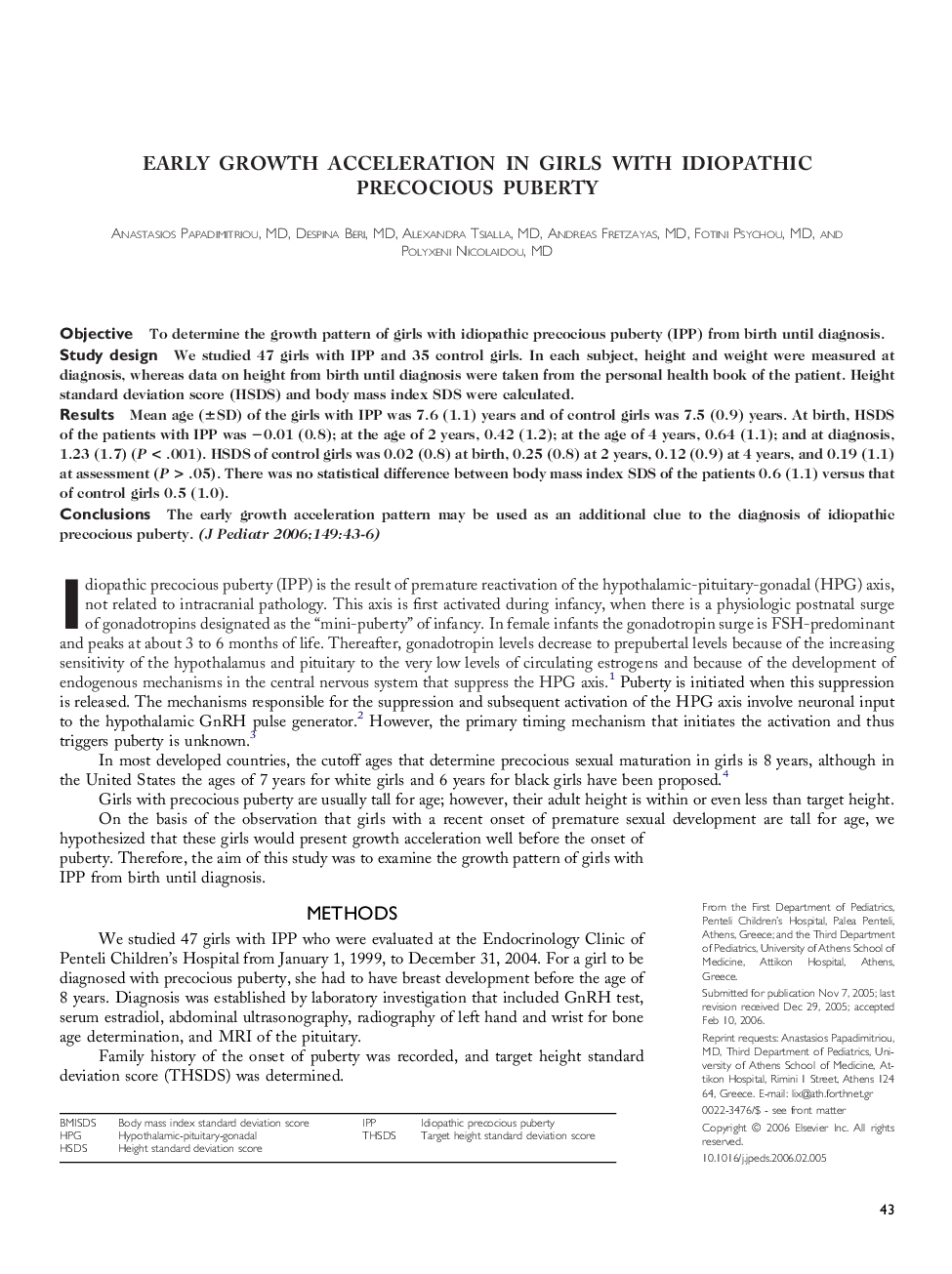| Article ID | Journal | Published Year | Pages | File Type |
|---|---|---|---|---|
| 4169236 | The Journal of Pediatrics | 2006 | 4 Pages |
ObjectiveTo determine the growth pattern of girls with idiopathic precocious puberty (IPP) from birth until diagnosis.Study designWe studied 47 girls with IPP and 35 control girls. In each subject, height and weight were measured at diagnosis, whereas data on height from birth until diagnosis were taken from the personal health book of the patient. Height standard deviation score (HSDS) and body mass index SDS were calculated.ResultsMean age (±SD) of the girls with IPP was 7.6 (1.1) years and of control girls was 7.5 (0.9) years. At birth, HSDS of the patients with IPP was −0.01 (0.8); at the age of 2 years, 0.42 (1.2); at the age of 4 years, 0.64 (1.1); and at diagnosis, 1.23 (1.7) (P < .001). HSDS of control girls was 0.02 (0.8) at birth, 0.25 (0.8) at 2 years, 0.12 (0.9) at 4 years, and 0.19 (1.1) at assessment (P > .05). There was no statistical difference between body mass index SDS of the patients 0.6 (1.1) versus that of control girls 0.5 (1.0).ConclusionsThe early growth acceleration pattern may be used as an additional clue to the diagnosis of idiopathic precocious puberty.
